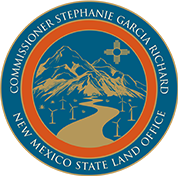FOR IMMEDIATE RELEASE
June 25, 2020
Contact:
Angie Poss, Assistant Commissioner of Communications
505.470.2965
State Land Office Partners with Planet, Utilizing High Resolution Satellite Imagery to Identify Trespass and Protect Public Lands
Over $2.7 million to be recouped for New Mexico public schools, hospitals, and universities
SANTA FE, NM – In 2019, after watching a 60 minutes special on satellite imagery and data analysis, New Mexico State Land Office Deputy Director of Mineral Resources, Jack Yates, started looking into commercial aerospace company Planet, which designs, builds and operates the largest constellation of Earth-imaging satellites in history. Specifically, he was interested in how Planet could help the agency to improve management and oversight of the vast 13 million acres of state trust land in their care. Through Yates, the New Mexico State Land Office entered an agreement with Planet, on a pilot basis, to access high resolution, daily satellite imagery of the Permian Basin, where staff assigned to oversee land in the booming oil field were struggling to keep up with the increase in demand.
That pilot project and continued partnership with Planet has helped the State Land Office use high resolution imagery to identify eight instances of mineral theft and trespass. Seven of those instances were caliche mines that were not approved or under lease by the State Land Office. Oil and gas companies use caliche, a shallow deposit of naturally formed limestone, as foundation material for roads and well pads to support heavy equipment. Companies were notified of their trespass, which resulted in multiple new leases for the approved use of the minerals, as well as nearly half a million dollars in fines for trespass and theft. Over the course of those new leases from identified trespass, $2.7 million will be raised to help ensure that the State Land Office is getting every dollar meant for its beneficiaries, including New Mexico public schools, hospitals and universities.
“At the New Mexico State Land Office, we are charged with managing over 13 million acres of land, including finite minerals like oil, gas and caliche. Our staff does an amazing job on the ground, but they can’t be everywhere all the time. We typically use imagery from several sources to fill the gaps, but it’s often expensive and out of date by months if not years by the time it is available,” said Commissioner of Public Lands Stephanie Garcia Richard. “Planet has empowered us to take action, not only in the identification of trespass, but also with the identification of oil and produced water spills that threaten the long term health of our land. The faster we identify spills, the faster we can hold bad actors accountable for contamination and clean up.”
Mineral Resource staff, working with the State Land Office Geographic Information Systems (GIS) team, have identified 71 spills of oil, gas and produced water, and have helped to provide other state agencies with high resolution imagery of a recent spill in the Black River near Carlsbad. Through this coordination, the state was able to fine the operator that caused the spill $20,000 and accelerate a full remediation and clean-up plan for the spill and the river.
Staff continue to closely monitor the Permian Basin using daily imagery provided by Planet. Christian “Smitty” Smith, Manager of the State Land Office GIS team, recently presented this success story at a webinar for the National States Geographic Information Council. That webinar can be viewed in its entirety here.
“With flexible access to data and ease of use in Planet Explorer, the New Mexico State Land Office was able to turn around incredible results in a matter of weeks and justify a significant return on investment,” said Garrick Ballantine, Vice President, Americas, at Planet. “Their success is a testament to how satellite data is a vital tool for governments and supporting agencies to address problems and enact change in a timely manner. In light of recent events, organizations are reevaluating existing workflows and utilizing satellite data to be better prepared for future events.”
“Through our continued investment in Planet, we are committing to using the best technology and data out there to protect public lands as well as protect the institutions that we raise revenue for. And we need the best information at our disposal to make data based decisions to steward our land for future generations,” said State Land Office Commissioner Garcia Richard. “Our hope is to eventually expand our use of Planet beyond the Permian Basin to monitor state trust land health statewide.”
